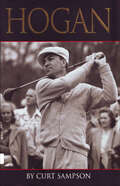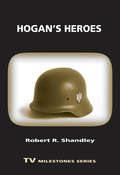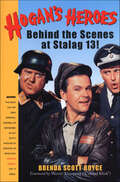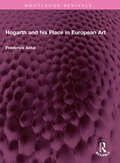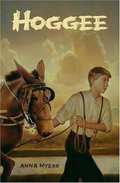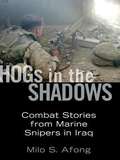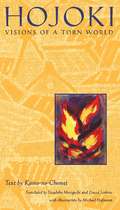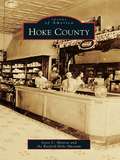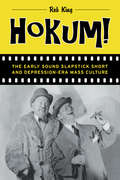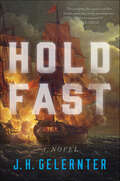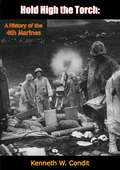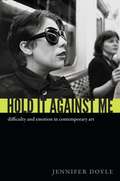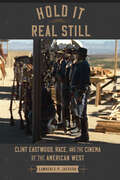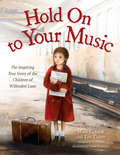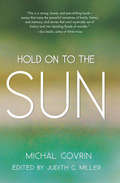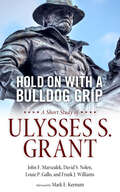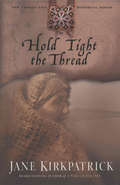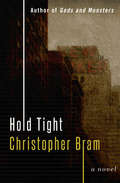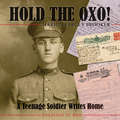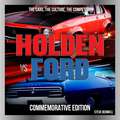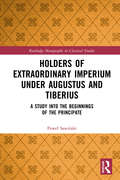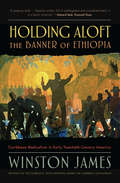- Table View
- List View
Hogan
by Curt SampsonThis updated edition of a NEW YORK TIMES best seller includes a final chapter, which chronicles the last years of his life and examines his enduring legacy. Included are quotes and tributes from many of golf's greats such as Byron Nelson and a perceptive assessment of the life and legend of the man who may have been the greatest golfer ever-Ben Hogan.
Hogan's Heroes
by Robert R. ShandleyAnalyzes the unique satirical social and political commentary offered by Hogan's Heroes during a volatile period in American history.
Hogan's Heroes: Behind the Scenes at Stalag 13!
by Brenda Scott RoyceAn insider’s look at the surprisingly successful, perennially popular classic 1960s sitcom set in a prisoner-of-war camp in World War II Germany.If your fondest TV memories involve the POWs of Stalag 13 cleverly outwitting their captors, Schultz stammering “I know nothing!” and Hochstetter threatening to send everyone to the Russian front, then this is the book for you. This fun and informative book takes you behind the scenes of the classic 1960s sitcom to reveal:the story behind the creation, production, and eventual cancellation of the seriesthe controversy surrounding the show’s unlikely premiseinterviews with many of the show’s stars and crewbiographies of the stars and supporting actorsa detailed guide to each of the 168 episodesa guide to collecting Hogan’s memorabilia and more . . . Hogan’s Heroes is more popular now than ever before, especially in Germany, where it has become a surprising cult hit. In this book, most of the show’s stars and behind-the-scenes personnel share their memories and reflect on the series’ enduring popularity.
Hogarth and his Place in European Art (Routledge Revivals)
by Frederick AntalFirst published in 1962, Hogarth and his Place in European Art attempts to convey the historical relevance, both in its native and European context, of perhaps the most outstanding English painter of the eighteenth century. Dr. Antal applies his method of establishing the close relationship between the political and social history and the arts and letters of the period. Thus, the book goes far beyond the limits of art historical appreciation. It gives a panoramic picture of the first half of the eighteenth century in England with all its social, literary, and artistic connotations. He shows how England, which during those years became both politically and economically the most advanced country in Europe, could provide in Hogarth, in spite of the slender native tradition, the most progressive artistic personality of his time – whose work revealed the views and tastes of a broad cross-section of society. He traces Hogarth’s stylistic origins back to their European sources and analyses his impact on contemporary European and English art as well as the influence he exerted on generations to come. This book will be of interest to students of art, art history, literature, and European history.
Hoggee
by Anna MyersAlways overshadowed by his competitive older brother, especially in their work as mule drivers on the Erie Canal, fourteen-year-old Howard finally finds the courage to pursue his dreams of becoming an educator after he learns about sign language and teaches it to his deaf friend in nineteenth-century New York State.
Hogs in the Shadows
by Milo S. AfongThere is a special breed of Marine for whom the prey is the enemy--and every day is hunting season. This Marine is a HOG--a Hunter of Gunmen. These are the gripping, gut-wrenching true stories of those Marines in Iraq whose sole purpose on the battlefield is to eliminate the enemy--one combatant at a time. Every time a HOG puts his eye to the glass, it means death for his target. Here, former Scout/Sniper Team leader Milo S. Afong reveals what it takes to be a Hunter of Gunmen. He describes the intensive training that turns expert infantrymen into one-shot life-takers, how they operate in the field--and under fire--and how HOGs get the job done under any conditions. From sniping from a rooftop in Baghdad, to unknowingly being surrounded in a palm grove in the city of Hit, these stories will transport you right into the heat of the desert war, where one squeeze of the trigger can make all the difference.
Hoist a Cold One!: Historic Bars of the Southwest
by Melody GrovesThrowing a few drinks back at the bar is a timeless tale of humanity. In the American Old West, this tale played out in ramshackle huts and stylish establishments alike in some of the most unforgiving terrain imaginable. While the legendary Crystal Palace in Tombstone, Arizona, had little in common with the tent cities that sprang up in Leadville, Colorado, and Silver City, New Mexico, one common feature was the bars—constructed of planks of mahogany, cherrywood, or rosewood. These bars were often hauled across hundreds of miles of rugged terrain to arrive in various cities, where they would support the elbows, chins, and drinks of those who sought to quench their thirst.From the Grand Hotel in Bisbee to Rosa&’s Cantina in El Paso, Myke and Melody Groves tell the story of the front and back bars of twenty-five establishments in Arizona, Texas, New Mexico, and Colorado through a combination of historic background and photographs. This lively travelogue, complete with driving directions, will inspire visitors to the West&’s old mining camps, railroad towns, and ranching centers to stop in and belly up to the bar.
Hoke County (Images of America)
by Joyce C. Monroe Raeford-Hoke MuseumHoke County is located in the Sandhills region of North Carolina between the beaches and mountains. In the beginning, the countryside was covered with magnificent pine forest. Most of the early settlers were Highland Scots who started many of the region's churches. As communities grew, families were concerned about the education of their children. The first high school, Raeford Institute, was established in 1891. The village of Raeford, now the county seat, was chartered in 1901. J. W. McLauchlin, known as the father of Hoke County, was a state senator from Cumberland County. He introduced a bill in 1911 to form Hoke County from parts of Cumberland and Robeson Counties. Today the county has two golf courses, a wind tunnel, an ethanol plant, the Carolina Horse Park, Burlington Industries, and Unilever. The Fort Bragg Military Reservation covers a large part of the county, increasing the military population. Hoke is one of the top five fastest growing counties in North Carolina due to Base Realignment and Closure (BRAC).
Hokkien Theatre Across The Seas: A Socio-Cultural Study
by Caroline ChiaThis book adopts a refreshing approach by examining Hokkien theatre in a region connected by maritime networks, notably southern Fujian, Taiwan, Kinmen and Singapore. It considers how regional theatre is shaped by broader socio-cultural and political contexts and the motivation to stay relevant in an era of modernisation and secularisation. Political domains are often marked out by land boundaries, but the sea concept denotes fluidity, allowing theatrical forms to spread across these ‘land-bounded’ societies and share a common language and culture."This is an insightful theatrical study on the web of Chinese cultural networks in southern China and Singapore, and by extension, between China and Southeast Asia in the twentieth century and beyond. Using diverse sources in multiple languages and extensive field ethnography, this is a ground-breaking study which is both didactic and inspiring."- Lee Tong Soon, author of Chinese Street Opera in Singapore (University of Illinois, 2009)."Focusing on Hokkien theatre, this book offers new insights into how Chinese performing art responds to geographical, temporal, and social changes. Historical sources in different languages are widely used to give access to the cultural characteristics of Hokkien theatre, offering valuable ethnographic reports on the contemporary practices of Hokkien theatre in Taiwan, Kinmen, and Singapore. The book comments on the changing ritualistic significance of Hokkien theatre, and help us understand how societies remember the past of a performing tradition, and shape its present."- Luo Ai Mei, Co-Editor of A Preliminary Survey of the Cantonese Eight Song Cycles in South China: History and Sources (2016)
Hokum!: The Early Sound Slapstick Short and Depression-Era Mass Culture
by Rob KingA free ebook version of this title is available through Luminos, University of California Press’s Open Access publishing program. Visit www.luminosoa.org to learn more. Hokum! is the first book to take a comprehensive view of short-subject slapstick comedy in the early sound era. Challenging the received wisdom that sound destroyed the slapstick tradition, author Rob King explores the slapstick short’s Depression-era development against a backdrop of changes in film industry practice, comedic tastes, and moviegoing culture. Each chapter is grounded in case studies of comedians and comic teams, including the Three Stooges, Laurel and Hardy, and Robert Benchley. The book also examines how the past legacy of silent-era slapstick was subsequently reimagined as part of a nostalgic mythology of Hollywood’s youth.
Hold Autumn in Your Hand
by George Sessions Perry Maxine C. Hairston"The Texas January day was all blue and gold and barely crisp. Only the absence of leaves and sap, the presence of straggling bands of awkward crows, the gray-yellow flutter of field larks, and the broad, matter-of-fact hibernation of the earth said it was winter as Sam Tucker walked along the road, his long legs functioning automatically, farmerly. His body had about it the look of country dogs at the end of winter, when they are all ribs and leg muscles and jaw muscles and teeth. . . . " Hold Autumn in Your Hand is the memorable story of Sam Tucker and the year that he contracts to farm sixty-eight acres of San Pedro bottomland. He is eager to work the rich soil despite the fact that he will earn only six bits a day. Sam, his wife Nona, their two children, and one of the most irrepressible grandmothers in modern fiction absorb the reader in their joys and disappointments. The story is built around Sam Tucker's determination to use his knowledge of the land and hard work to provide food for his family and hope for the future.
Hold Fast: A Novel (A Thomas Grey Novel #1)
by J. H. GelernterA desperate sea battle; a fortune risked on the turn of a card; a duel at dawn with the loser…Patrick O’Brian meets James Bond.It’s 1803. The Napoleonic Wars are raging, Britain is on her heels, and His Majesty’s Secret Service has just lost its best agent, Thomas Grey. Deeply depressed by his wife’s untimely death, Grey resigns from the service and accepts an offer to join a lumber firm in Boston. But when a sea battle with a privateer forces the ship carrying him west to make port in neutral Portugal, Grey is approached with a counteroffer: become a wealthy man by selling out Britain’s spy network to France. The French take Grey for a disgruntled ex–naval officer, blithely unaware that Grey had lost his wife to an unlucky shot from a French cannon.Now, after many years serving King and Country, Grey seizes the opportunity to fight a covert war of his own. He travels to Paris, and—playing the part of the invaluable turncoat the French believe him to be—proceeds to infiltrate the highest levels of Napoleon’s government. If he can outwit his handlers, outmatch his French counterparts, and outrun Napoleon’s secret police, Grey may just avenge his wife’s death and turn the tide of war in England’s favor. Bursting with action and intrigue, Hold Fast sends readers headlong into an unrelenting spy thriller.
Hold High the Torch: A History of the 4th Marines (Elite Unit Ser. #No. 18)
by Kenneth W. ConditHold High the Torch, the first of a series of regimental and squadron histories by the Historical Branch, G-3 Division, Headquarters U.S. Marine Corps, is designed primarily to acquaint the members of the 4th Marines, past and present, with the history of their regiment. In addition, it is hoped this volume will enlarge public understanding of the Marine Corps’ worth both in limited war and as a force in readiness. During most of its existence the 4th Marines was not engaged in active military operations, but service of the regiment in China, the Dominican Republic, and off the west coast of Mexico, was typical of the Marine Corps’ support of national policy.In many of its combat operations, the 4th Marines was only one element of a much larger force. In other instances, as in the Dominican Republic and China, the regiment was a subordinate unit in situations which were essentially political and diplomatic. Only so much of these higher echelon activities as are essential to an understanding of the 4th Marines story have been told. This is a regimental history and the focus is therefore on the 4th Marines.
Hold It Against Me: Difficulty and Emotion in Contemporary Art
by Jennifer DoyleIn Hold It Against Me, Jennifer Doyle explores the relationship between difficulty and emotion in contemporary art, treating emotion as an artist's medium. She encourages readers to examine the ways in which works of art challenge how we experience not only the artist's feelings, but our own. Discussing performance art, painting, and photography, Doyle provides new perspectives on artists including Ron Athey, Aliza Shvarts, Thomas Eakins, James Luna, Carrie Mae Weems, and David Wojnarowicz. Confronting the challenge of writing about difficult works of art, she shows how these artists work with feelings as a means to question our assumptions about identity, intimacy, and expression. They deploy the complexity of emotion to measure the weight of history, and to deepen our sense of where and how politics happens in contemporary art. Doyle explores ideologies of emotion and how emotion circulates in and around art. Throughout, she gives readers welcoming points of entry into artworks that they may at first find off-putting or confrontational. Doyle offers new insight into how the discourse of controversy serves to shut down discussion about this side of contemporary art practice, and counters with a critical language that allows the reader to accept emotional intensity in order to learn from it.
Hold It Real Still: Clint Eastwood, Race, and the Cinema of the American West
by Lawrence P. JacksonHow did the American western feature film genre rebrand itself in the late seventies and respond to the fury of global and domestic political affairs?In Hold It Real Still, Lawrence Jackson examines Clint Eastwood's influence on the western film while also exploring how that genre continues to operate into the twenty-first century as an ideological channel for ideas about race and imperialism. Jackson argues that the western genre pivoted from an initial doctrine of racial liberalism, albeit a clumsy one, during the John Wayne years to a motile agenda of substitution, exclusion, and false equivalency during the Clint Eastwood period. The book traces how Eastwood, an actor first associated with the avant-garde, anti-colonialist discourse of "spaghetti" western cinema, reversed himself in the second half of the 1970s with The Outlaw Josey Wales—a film that had at its heart the fantasy of Black erasure from American life. Jackson situates Eastwood's work as a response to massive social and political upheavals in America: defeat in Vietnam, riots in northern cities, the civil rights movement and associated legislation, and the Great Migration, which made possible a degree of mixed-race public interaction that was impossible even as late as the 1960s. Hinged by a close reading of four blockbuster films which continue to shape discourses in cinematic arts, American liberalism, the westerns, and race relations today—The Good, the Bad and the Ugly, Josey Wales, Ride with the Devil, and Django Unchained—Jackson's unique critique flashes on the contradictory symbolic structures at work in these masterpieces. Juxtaposing the films' motifs, tropes, and hidden Black figures with historicist readings lays bare the containment strategies of the 1970s and beyond used to stymie civil rights progress and racial equity in the United States. Tackling the rise of neoracism and the domestic apparatus of surveillance, control, and erasure, Hold It Real Still offers an astonishing revision of what audiences and critics thought they understood about a uniquely American genre of film.
Hold On to Your Music: The Inspiring True Story of the Children of Willesden Lane
by Mona Golabek Lee CohenDiscover the inspiring illustrated true story about one girl's escape from the Holocaust to become a concert pianist against all odds, made popular by the beloved novel The Children of Willesden Lane.In pre-World War II Vienna, Lisa Jura was a musical prodigy who dreamed of becoming a concert pianist. But when enemy forces threatened the city—particularly the Jewish people that lived there—Lisa's parents were forced to make a difficult decision. They chose to send Lisa to London for safety through the Kindertransport—a rescue effort that relocated Jewish children. As Lisa yearned to be reunited with her family while living in a home for refugee children on Willesden Lane, her music became a beacon of hope for those around her.A true story of courage, survival, and determination, this compelling tribute to a gifted young girl has already touched the lives of many around the world. Originally published in 2017 for older readers, The Children of Willesden Lane has sold hundreds of thousands of copies globally; now this picture book retelling will inspire a new generation.
Hold On to the Sun
by Michal GovrinThe Israeli author&’s poetry, essays, and stories on the haunting legacy of WWII &“swirl mystically out of history and into dazzling floods of wonder&” (Don DeLillo, author of White Noise). In this portrait of the artist as a young woman, one of Israel&’s most acclaimed contemporary writers weaves together a kaleidoscope of fiction, poetry, and essays. Populated by both fictional and real people, each tale is in some way a search for meaning in a post-Holocaust world. Reminiscent of W.G. Sebald, characters irrationally and humanely find reason for hope in a world that offers little. Essays describe Govrin&’s visits to Poland as a young adult, where her mother had survived a death camp, but had lost her husband and their child, Govrin&’s half-brother. Capturing the depths of denial and the exuberance of youth in a multiplicity of voices, this haunting collection &“joins the few serious books that try through artistic means to face the unspeakable&” (Aharon Appelfield, author of Badenheim 1939).
Hold On with a Bulldog Grip: A Short Study of Ulysses S. Grant
by John F. Marszalek Frank Williams David Nolen Louie GalloIn this new short biography of Ulysses S. Grant, leading scholars provide an accessible introduction to Grant and his legacy. Grant led Federal forces to victory in the Civil War, was the first modern American president, and authored his memoirs, which would eventually become one of the greatest books of nonfiction by an American author. The authors present a thematic exploration of Grant, providing the necessary insight to appreciate Grant and correct the myths that for too long clouded his true importance. They highlight specific moments or relationships in Grant’s life—including his connection to such key figures as Abraham Lincoln and Mark Twain—and elaborate on the more controversial elements of Grant’s legacy, such as accusations about his drinking and corruption during the Grant presidency. Not to overlook his military accomplishments, they devote time to the study of Grant’s war strategy and military career, beginning as early as his reluctant enrollment into West Point. From humble birth to tragic death, this new take on Ulysses S. Grant instills readers with a deeper understanding of the military legend’s nuanced personal history and an appreciation for the late president’s tragic and triumphant story.
Hold Tight the Thread (Tender Ties #3)
by Jane KirkpatrickBASED ON A TRUE STORY In a land occupied by foreign powers and torn by confusion and conflict, a mother seeks to weave her family and her past into a fabric that will not tear. Their Lives Were Woven by Wars and Wilderness Places, and Tied by the Peace of Family and Faith. As the 1840s bring conflict to the Pacific Northwest's rugged Columbia Country, new challenges face Marie Dorion Venier Toupin: the wife, mother, and Ioway Indian woman who crossed the Rocky Mountains with the Astor Expedition, the first big fur trapping expedition after Lewis and Clark's. On French Prairie in the newly forming Oregon Territory, Marie strives to meet the needs of her conflict-ridden neighbors: British settlers and Americans, missionaries and disease-stricken natives, fur trappers and French Canadian farming families, and the surviving natives of the region. At the same time, as a mother, Marie must weave together the threads of an unraveling family. One daughter compares and judges as she seeks to find her place; another reaches for elusive evidence of her mother's love. Marie's memories are threatened with the emergence of a figure from the past. In the midst of this turmoil, Marie discovers an empowering spiritual truth: Unconditional love can shed light on even the darkest places in the heart.
Hold Tight: A Novel
by Christopher BramDuring World War II, a gay navy sailor works undercover to catch Nazi spies, in this &“fast-moving&” novel from the author of Gods and Monsters (Publishers Weekly). During shore leave in New York, Seaman Second Class Hank Fayette, a Texas country boy in the big city, finds himself visiting a gay brothel, where he is swiftly arrested during a raid. Facing the prospect of a dishonorable discharge—or worse—he is given another option: Return to the brothel, near Manhattan&’s West Side piers, and work undercover as a prostitute. Nazi agents are rumored to haunt the area, and Hank is a perfect lure to trap them. This military man is about to risk his life for his country in a way he never expected in &“a spy thriller that breaks new ground&” from the author of Eminent Outlaws and The Notorious Dr. August (Kirkus Reviews).
Hold the Oxo!: A Teenage Soldier Writes Home
by Marion Fargey BrookerShort-listed for the 2014 Forest of Reading - White Pine Award for Non-Fiction Canada was young during the First World War, and with as many as 20,000 underage soldiers leaving their homes to join the war effort, the country’s army was, too. Jim, at 17, was one of them, and he penned countless letters home. But these weren’t the writings of an ordinary boy. They were the letters of a lad who left a small farming community for the city on July 15, 1915, a boy who volunteered to serve with the 79th Queen’s Own Cameron Highlanders. Jim’s letters home gloss over the horrors of war, focusing instead on issues of the home front: of harvesting, training the horses, and the price of hogs. Rarely do these letters, especially those to his mother and father, mention the mud and rats, the lice and stench of the trenches, or the night duty of cutting barbed wire in no man’s land. For 95 years his letters remained in a shoebox decorated by his mother. Jim was just 18 when he was wounded and died during the Battle of the Somme. Hold the Oxo! tells the story that lies between the lines of his letters, filling in the historical context and helping us to understand what it was like to be Jim.
Holden vs Ford Commemorative Edition
by Steve BedwellCelebrates Australia's greatest automotive rivalry.Holden versus Ford, Ford versus Holden, Red versus Blue, Blue versus Red. Even the order in which you say these two precious words marks you for life as to which side of the white line you drive on. Going straight to the heart of what it means to be Australian, this book is a must-have addition to any Ford or Holden lover's bookshelf. Loyalty, faith, competition and love is expressed through two brands of motor car. Never before has this nation-dividing topic been faced head on, and written about in such a detailed and humorous way. Holden vs Ford: Commemorative Edition includes a comprehensive list of all the Ford and Holden models released since the beginning of the twentieth century to the mid-1980s. It covers everything from the panel van craze during the 1970s to the Great Race at Philip Island, Mt Panorama and the glory days of other Ford versus Holden racing victories. With over 300 photos and great design! Holden v Ford is a full-throttle car book and the perfect Father s Day gift book.
Holders of Extraordinary imperium under Augustus and Tiberius: A Study into the Beginnings of the Principate (Routledge Monographs in Classical Studies)
by Paweł SawińskiThis volume focuses on special military and diplomatic missions in various provinces of the Empire that Augustus and Tiberius entrusted to selected members of the domus Augusta, granting them special prerogatives (imperia extraordinaria). Sawiński compares and analyses various primary and secondary sources exploring special powers and missions in the provinces of the domus Augusta during the reigns of Augustus and Tiberius, from 27 BC to AD 23, from border regions on the Rhine and the Danube to client states such as Judaea and Armenia. It explores the legal aspects of these powers wielded in the provinces and how these missions and the subsequent honours helped to solidify power within a new hereditary system of power. The reader will also find in it a critical discussion of the current state of research on this subject. Holders of Extraordinary Imperium under Augustus and Tiberius offers an important study of these powers and prerogatives of the imperial family that will be of interest to anyone working on the Augustan age, the early Empire and Principate, and the Roman imperial family. This volume should also prove useful to students of archaeology and art history.
Holding Aloft the Banner of Ethiopia: Caribbean Radicalism in Early-Twentieth Century America
by Winston JamesA major history of the impact of Caribbean migration to the United States. Marcus Garvey, Claude McKay, Claudia Jones, C.L.R. James, Stokely Carmichael, Louis Farakhan—the roster of immigrants from the Caribbean who have made a profound impact on the development of radical politics in the United States is extensive. In this magisterial and lavishly illustrated work, Winston James focuses on the twentieth century&’s first waves of immigrants from the Caribbean and their contribution to political dissidence in America. Examining the way in which the characteristics of the societies they left shaped their perceptions of the land to which they traveled, Winston James draws sharp differences between Hispanic and English-speaking arrivals. He explores the interconnections between the Cuban independence struggle, Puerto Rican nationalism, Afro-American feminism, and black communism in the first turbulent decades of the twentieth century. He also provides fascinating insights into the impact of Puerto Rican radicalism in New York City and recounts the remarkable story of Afro-Cuban radicalism in Florida.
